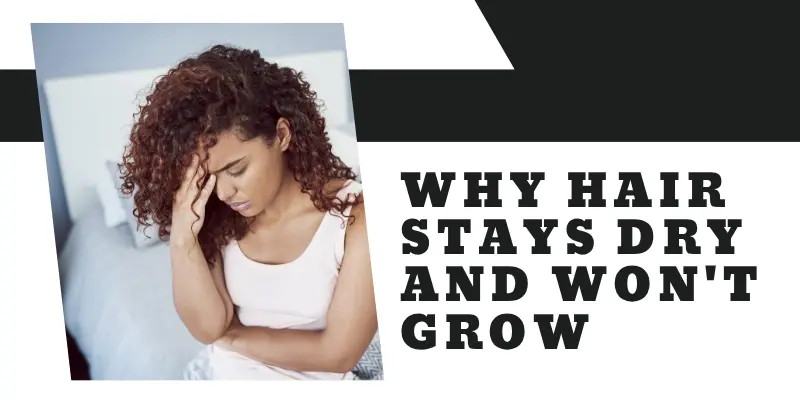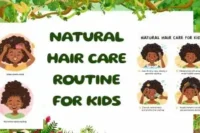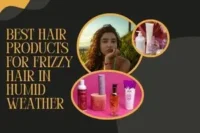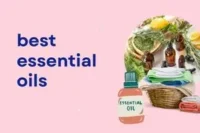Hair Growth Tips – How to Transform Short, Dry Hair Fast
Published: 2 Apr 2025
Dreaming of long, flowing hair but stuck with breakage and slow growth? You’re not alone! If you’re searching for proven hair growth tips that work, you’ve found your solution. Many people with short, brittle strands feel frustrated, but the great news is? Thicker, healthier hair is achievable naturally.
This guide reveals dermatologist-approved hair growth tips to repair damage, stimulate follicles, and prevent future problems, with no expensive salon treatments needed. Let’s turn those hair struggles into success!”
Why Hair Stays Dry and Won’t Grow
Hair often stays dry and won’t grow due to a lack of moisture and essential nutrients. Overuse of heat tools, harsh products, or frequent chemical treatments can damage the cuticle, leading to breakage. A dry scalp can also slow growth by weakening follicles, so an effective dry scalp treatment is important to restore health and encourage stronger hair growth.

Poor diet and stress contribute to dryness and stunted growth. Regular hydration and scalp care are key.
Moisture deficiency – Harsh products strip protective oils
When your hair loses its natural oils, it becomes dry, rough, and weak. This usually happens when you use strong shampoos, chemical treatments, or products that remove the hair’s protective oil layer. Without this natural coating, hair can’t lock in moisture and breaks easily.
Heat abuse – Daily styling at high temperatures causes structural damage
Using flat irons, curling wands, or blow dryers at high heat every day slowly weakens the inside of the hair. This heat damage makes strands thin and fragile, causing them to snap before they can grow longer.
Nutritional shortages – Lack of protein, iron, and vitamins weakens strands
Your hair needs protein, iron, and vitamins (like biotin and vitamin D) to grow strong and healthy. If your diet doesn’t have enough of these, your hair becomes brittle, dull, and slow-growing. Just like plants need water and sunlight, your hair needs proper nutrition to thrive.
Realistic Timeline for Results
2–4 weeks – Noticeable softness and reduced breakage. With gentle hair care, deep conditioning, and a nutrient-rich diet, you may notice softer, shinier strands and less breakage within a month.
3–6 months – Visible length gains (patience is essential!)
Hair usually grows about half an inch per month. With consistent care, you could see 1.5–3 inches of new growth over this period.
Success Story:
“After 90 days of weekly avocado masks and gentle scalp massages, Mia’s hair grew 1.5 inches—the most growth she had seen in years. Her hair felt stronger, softer, and more manageable.”
The Complete Hair Care Routine
A complete hair care routine keeps your hair healthy and strong. Start by washing your hair with a gentle shampoo.

Use a conditioner to add moisture and softness. Apply oil or serum to protect and nourish your strands. Don’t forget to trim split ends regularly. Always protect your hair from heat and sun damage.
1. Cleansing Without Damage
Washing your hair the right way keeps it clean without stripping away its natural oils.
- Shampoo – Use a sulfate-free shampoo such as Maui Moisture 2–3 times a week. Sulfate-free formulas are gentle and help maintain natural moisture, which is important for preventing dryness.
- Conditioner – After shampooing, apply conditioner mainly to the ends of your hair, where dryness is most common. Leave it on for 3–5 minutes before rinsing. This helps smooth the cuticle, making hair softer and easier to detangle.
2. Intensive Hydration Methods
Keeping your hair deeply hydrated is the key to making it soft, shiny, and healthy. Here’s how you can give it the moisture it needs:
Weekly treatment – Mix 1 tablespoon of olive oil with 1 egg yolk and apply it evenly from roots to ends. Leave it on for 20 minutes before washing with a mild shampoo. This DIY mask nourishes your hair with healthy fats and protein, helping repair dryness and breakage.
Daily leave-in – Use SheaMoisture Jamaican Black Castor Oil Strengthen & Grow as a daily leave-in conditioner. It locks in moisture, strengthens strands, and promotes healthy growth without leaving your hair greasy.
Pro Tip – Apply aloe vera gel to damp hair before styling. Aloe vera adds lightweight hydration, smooths frizz, and gives your hair a natural shine.
Natural Hair Growth Boosters
If you want your hair to grow longer, stronger, and healthier, you need to take care of it from the inside out and give your scalp the attention it deserves.
1. Nutrition for Faster Growth
Healthy hair starts with a healthy body. What you eat directly affects how your hair grows.
- Essential foods – Include salmon for omega-3 fatty acids, sweet potatoes for vitamin A, and lentils for iron. These nutrients help nourish hair follicles and prevent breakage.
- Supplements – Adding collagen peptides (about 10g daily) can help strengthen the hair’s structure, making each strand thicker and less likely to snap.
2. Scalp Stimulation Techniques
Good blood flow to the scalp means more nutrients reach your hair roots.
- Massage method – Use your fingertips (never your nails) to massage your scalp in gentle, circular motions for about 5 minutes daily. This boosts circulation and helps relax your scalp muscles.
- Growth serum – Try a natural DIY blend: mix 5 drops of rosemary essential oil with 2 tablespoons of jojoba oil. Apply it to your scalp and massage well.
- Science note – Research shows that rosemary oil can encourage hair growth just as effectively as the common hair-growth medicine minoxidil, but without harsh side effects.
Damage Prevention Strategies
Keeping your hair healthy means protecting it from daily wear and tear. Heat, rough handling, and tight hairstyles can all weaken strands and cause breakage. The key is to be gentle, keep hair moisturized, and use safe styling methods.
1. Heat-Free Styling Alternatives
You don’t always need hot tools to style your hair.
- Air-Dry Tricks: After washing, gently twist your hair inside a microfiber towel or a soft cotton T-shirt. This helps remove excess water and creates soft, natural waves without any heat.
- Heat Safety: If you must use heat, keep your tools below 300°F (150°C) and always spray a heat protectant first to shield strands from damage.
2. Protective Styling Guide
Certain hairstyles keep your hair safe from breakage and tangling.
- Best Styles: Loose French braids and low ponytails tied with soft scrunchies are gentle on your hair and prevent stress on the roots.
- Night Care: Wear a silk or satin bonnet while sleeping to lock in moisture and reduce friction from your pillow.
⚠ Warning: Avoid tight buns, braids, or ponytails that pull on your scalp. This can cause traction alopecia, a type of hair loss where the hairline recedes, and in many cases, the damage is permanent.
My Hair Transformation: From Brittle to Beautiful
My hair used to be dry, weak, and full of split ends. I started using coconut oil and deep conditioning every week. I also trimmed my hair regularly and avoided heat tools.

Slowly, my hair felt softer and looked shinier. It started to grow longer and break less. Now, my hair feels strong, healthy, and beautiful.
The ‘Before’ Disaster
“For three years, my hair was stuck at shoulder-length, dry, frizzy, and full of split ends. I used a flat iron daily to hide the damage, which created a vicious cycle of breakage. Bleach had turned my strands to straw, and my flaky scalp made things worse. I spent hundreds on salon treatments that didn’t work, and clip-in extensions became my shameful secret.”
The Turning Point
“Everything changed when I committed to six months of natural care. I:
- Quit heat styling cold turkey (even for special events!)
- Switched to sulfate-free shampoo (SheaMoisture Coconut & Hibiscus)
- I apply coconut oil masks every Sunday while watching Netflix
- Massaged my scalp with peppermint oil 3x/week (it tingled, a good sign!)
The first month? Just slightly softer hair. But by Month 3, my ponytail felt thicker. By Month 6, I had 4 inches of healthy growth, no extensions needed!”
The ‘After’ Victory
“Today, my hair reaches my mid-back naturally. Friends constantly ask, ‘Are these extensions?’ My secret wasn’t expensive products, just stubborn consistency. Now I:
- Air-dry 90% of the time
- Sleep on a silk pillowcase (game-changer for frizz)
- Use rice water rinses monthly (thanks to my grandma’s advice)
Comparing old photos shocks me, my hair looks photoshopped, but it’s real!”
5 Non-Negotiable Habits I Learned
Over time, I discovered a few simple habits that made a huge difference in my hair’s health and growth. These aren’t just tips, they’re must-do steps I follow without fail.
1. Silk/Satin Pillowcases
Switching from cotton to silk or satin pillowcases was a game-changer. According to the Journal of Cosmetic Dermatology, silk reduces hair friction by 43% compared to cotton. This means less frizz, fewer tangles, and less breakage while you sleep. My tip? Keep two pillowcases—use one while the other is in the wash.
2. Micro-Trims Every 10 Weeks
Cutting just ¼ inch off the ends every 10 weeks keeps split ends from moving up the hair shaft. This keeps hair looking fuller and healthier. You can even try a DIY method called “dusting ends” at home—just search for it on YouTube for easy guides.
3. Hydrate Like It’s Your Job
Drinking 3 liters of water daily helps keep hair shafts hydrated and plump from the inside. Proper hydration supports growth and shine. If plain water feels boring, add a few lemon slices for a refreshing twist.
4. Wide-Tooth Comb Over a Brush
Hair is at its weakest when wet, so using a wide-tooth comb helps prevent breakage. Always start detangling from the ends and work your way up slowly to avoid pulling and snapping strands.
5. Hair SPF (Yes, Really!)
The sun’s UV rays can make hair dry, brittle, and dull. A quick fix is to use a hair-specific sunscreen spray—or, on beach days, lightly mist some face sunscreen onto your hair and scalp for budget-friendly protection.
Conclusion:
Beautiful, healthy hair doesn’t happen overnight; it’s the result of steady care and the right hair growth tips. By feeding your body the right nutrients, stimulating your scalp, protecting your strands from damage, and keeping them hydrated, you give your hair the best chance to grow long, strong, and vibrant. Start with simple habits, stay consistent, and watch your hair transform over time.
FAQs on Hair Growth Tips
Yes, stress can significantly affect hair growth by pushing hair into a shedding phase called telogen effluvium. This can result in noticeable hair thinning or sudden hair loss. Managing stress is crucial for maintaining healthy hair. Techniques like scalp massages, meditation, deep breathing exercises, and regular physical activity help regulate hormones and reduce stress. Including omega-3-rich foods like salmon, walnuts, and flaxseeds in your diet can also support hair health and minimize stress-related shedding.
Coconut oil is excellent for deeply moisturizing dry hair, while castor oil helps strengthen strands and promote thicker growth. For optimal results, warm the oil slightly before applying, which allows it to penetrate the hair shaft more effectively. Apply mainly to the ends and mid-lengths to prevent greasy roots. You can leave it on for a few hours or overnight for intense hydration. Combining oils, such as coconut with argan or jojoba, can also provide a balanced treatment for softness and shine.
Sulfate-free shampoos are gentle on the hair and scalp, making them ideal for dry, damaged, or color-treated hair. They clean effectively without stripping away natural oils, which keeps hair hydrated and healthy. Regular shampoos, on the other hand, produce more foam and clean deeply, but frequent use can lead to dryness and irritation. Choosing the right shampoo depends on your hair type, scalp condition, and styling routine. For color-treated hair, sulfate-free is generally preferred to prevent fading.
Choosing the right hair mask depends on your hair’s needs. For dry hair, hydrating masks with ingredients like shea butter, aloe vera, or honey are excellent. For damaged or weak hair, protein-rich masks with keratin or egg protein help rebuild strength and repair strands. Curly hair benefits from masks that enhance moisture and define curls. Always read the ingredient list and match it to your hair goals—hydration, repair, frizz control, or shine. Frequency also matters: once a week is usually sufficient.
Not all conditioners suit every hair type. Fine hair requires lightweight, non-greasy conditioners to avoid weighing it down, while thick, coarse, or curly hair benefits from richer, creamier formulas for deep nourishment. Using the wrong conditioner can either leave hair flat or under-moisturized. Consider factors like scalp type, hair porosity, and styling habits when choosing a conditioner. Switching between light and heavy formulations depending on your hair’s condition can also help maintain balance.
Leave-in conditioners provide long-lasting moisture, protection from environmental damage, and help detangle hair. They are great for dry, frizzy, or color-treated hair. Rinse-out conditioners are designed for quick hydration and smoothing during regular washing routines. Very dry or chemically treated hair may benefit from using both—rinse-out for daily moisture and leave-in for added protection. Choosing the right type depends on hair texture, styling habits, and climate conditions.
Yes, hair growth oils can be effective, but results require consistent use over time. Oils like rosemary, castor, and peppermint stimulate the scalp, improve blood circulation, and may enhance hair thickness. Regular scalp massage while applying oils can further support growth. However, oils alone cannot fix underlying hormonal or genetic issues, so combine them with proper nutrition and hair care. Patience is key, as visible results usually take several weeks to months.
Choosing between protein and moisture depends on your hair’s condition. Brittle, weak, or chemically treated hair needs protein treatments to rebuild strength and structure. Rough, frizzy, or dry hair benefits from moisture treatments to increase softness and manageability. Overusing protein can make hair stiff or brittle, while excessive moisture without protein may weaken hair over time. A balanced hair care routine alternating between protein and moisture is the safest approach.
Heat protectants reduce the risk of heat-related damage but cannot completely prevent it. Using them with the lowest effective heat setting on styling tools is essential for safer styling. Heat protectants create a barrier that minimizes moisture loss, prevents breakage, and protects cuticles. Combining these with good hair care practices—like limiting frequent styling, using quality tools, and regular conditioning—offers the best protection. Always follow product instructions for maximum benefit.
Absolutely! Hormonal fluctuations from events like postpartum recovery, menopause, thyroid imbalances, or high stress can trigger hair shedding or slow growth. Maintaining a balanced diet, managing stress, and regular scalp care can help mitigate effects. Consulting a doctor or endocrinologist may be necessary for persistent or severe hair issues. Hormone-related hair changes are often temporary but require patience and targeted care to restore hair health.

- Be Respectful
- Stay Relevant
- Stay Positive
- True Feedback
- Encourage Discussion
- Avoid Spamming
- No Fake News
- Don't Copy-Paste
- No Personal Attacks

- Be Respectful
- Stay Relevant
- Stay Positive
- True Feedback
- Encourage Discussion
- Avoid Spamming
- No Fake News
- Don't Copy-Paste
- No Personal Attacks





